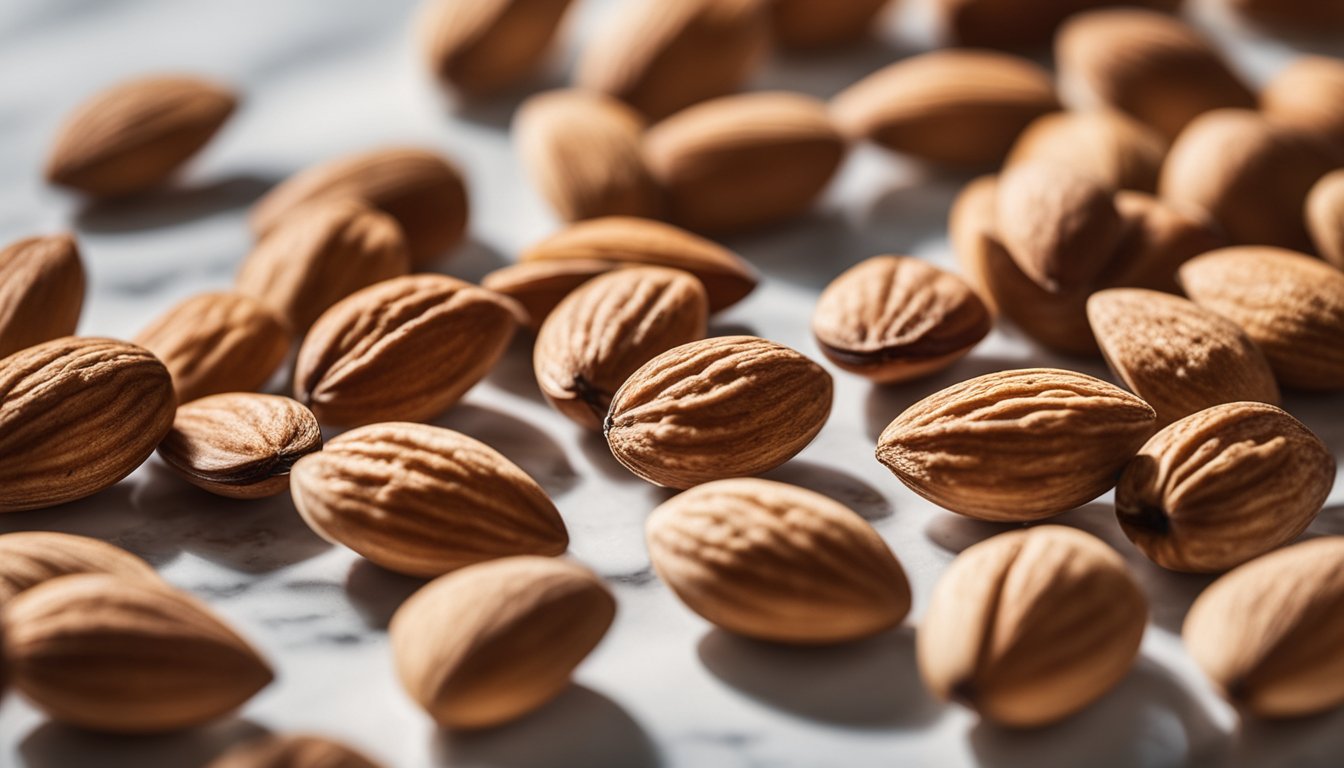Almond seeds are more than just a tasty snack; they’re a powerhouse of nutrition and versatility. I’ve discovered that these little gems pack a serious punch when it comes to health benefits, from boosting heart health to providing essential vitamins and minerals. Whether you’re munching on them raw or incorporating them into your favorite recipes, almond seeds can elevate your diet in ways you might not have imagined.
But there’s more to almond seeds than meets the eye. They’re not just a delicious addition to your pantry; they’re also a sustainable choice that supports local agriculture. As I dive deeper into the world of almond seeds, I’ll uncover their fascinating journey from orchard to table and share tips on how to make the most of this incredible superfood. Get ready to transform your meals and enhance your wellness with almond seeds.
Overview of Almond Seed
Almond seeds, or almonds, are packed with nutrients that greatly benefit health. These seeds offer healthy fats, protein, vitamins, and minerals. A single ounce of almonds contains about 6 grams of protein and 14 grams of fat, most of which is heart-healthy monounsaturated fat.
Nutrition aside, almond seeds are vibrant in flavor. Their subtle sweetness makes them perfect as a snack or ingredient in various dishes. I often toss them in salads for crunch or blend them into smoothies for a creamy texture.
Sustainability shines through with almond farming. Almond trees thrive in warm climates and require less water compared to other nuts. Supporting local growers is part of the almond journey. I love knowing that my choice contributes to both health and local economies.
Incorporating almond seeds into your diet couldn’t be easier. They can be enjoyed raw, roasted, or as almond butter. For a delicious treat, sprinkle sliced almonds on yogurt or oatmeal. These simple additions boost flavor and nutrition.
Look for organic options to maximize health benefits. Organic almonds typically have fewer pesticides and chemicals. They usually taste fresher too, making them a favorite in my pantry.
Nutritional Benefits of Almond Seed

Almond seeds offer impressive nutritional perks. These tiny powerhouses are packed with essential nutrients that enhance overall health.
Vitamins and Minerals
Almond seeds are rich in vitamins and minerals. A single ounce contains significant amounts of vitamin E, providing 7.3 mg, which acts as an antioxidant. They’re a good source of magnesium, with about 76 mg, supporting muscle and nerve function. Almond seeds also contain calcium and potassium, essential for bone health and maintaining blood pressure. Whether enjoyed as a snack or added to meals, they bring a wealth of nutrients.
Health Benefits
Almond seeds support heart health. Monounsaturated fats in them contribute to lower cholesterol levels. Regular consumption may reduce the risk of heart disease. They also aid in weight management, as their fiber content promotes a feeling of fullness. Almond seeds boost energy levels too, thanks to their protein content. Adding them to breakfast or snacks can provide a quick energy boost during the day.
Incorporating almond seeds into my diet brings these benefits in a tasty way, whether sprinkled on salads or blended into smoothies.
Culinary Uses of Almond Seed
Almond seeds shine in the kitchen. They add flavor, texture, and nutrition to countless dishes.
Raw and Roasted
I love enjoying almond seeds both raw and roasted. Raw almonds offer a crunchy, slightly sweet taste. Roasting them enhances their nuttiness, making them irresistible as a snack. Toss roasted almonds into salads for a satisfying crunch or chop them up and sprinkle over roasted vegetables. They pair beautifully with cheese boards too. Their versatility shines in both sweet and savory recipes.
Almond Milk and Flour
Almonds aren’t just for snacking. They transform into milk and flour, giving anyone a dairy alternative or gluten-free option. Making almond milk is simple: blend soaked almonds with water, then strain. The result? A creamy beverage perfect for smoothies or coffee. I also enjoy almond flour as a low-carb substitute in baking. It gives cookies and pancakes a delightful nutty flavor. It’s amazing how almond seeds expand my culinary horizons so effortlessly.
Cultivation of Almond Seed

Almond seeds thrive in specific conditions for optimal growth. Understanding these requirements helps in proper cultivation.
Growing Conditions
Almond trees prefer sunny spots. They require well-draining soil to prevent root rot. Soil pH should range from 6 to 7, making it slightly acidic to neutral. Annual rainfall of about 15 to 20 inches supports their growth. Hot summers and cool winters create ideal temperatures for almond production. Cold temperatures are necessary for dormancy, yet severe frost can damage blossoms. Planting in a location with good air circulation prevents humidity issues. I make sure to select disease-resistant varieties for a more successful yield.
Harvesting Techniques
Harvesting almond seeds requires timing and care. I wait until the hulls split open, typically in late summer. This indicates the nuts are ready for collection. I use a mechanical shaker or gently strike the branches to encourage the nuts to drop. Next, I collect the fallen nuts from the ground. Rinsing the nuts helps remove debris and reduce mold formation. Afterward, I spread them on a clean surface to dry in the sun for several days. Storing the dried almonds in a cool, dry place prolongs freshness. Keeping them in sealed containers also prevents pests from sneaking in.
Common Varieties of Almond Seed
Almond seeds come in various types, each with unique characteristics and uses. Understanding these varieties helps me choose the right almonds for my recipes or health needs.
Sweet vs. Bitter Almonds
Sweet almonds are the most common type. They taste pleasant and are ideal for eating raw or in desserts. I often use them in snacks, baked goods, or almond milk. Bitter almonds differ significantly. They contain amygdalin, which can release cyanide when processed. This variety isn’t safe to eat raw and is mainly used to make almond oil or flavoring. Always ensure I’m selecting sweet almonds for culinary delights.
Popular Cultivars
Several popular almond cultivars grace the market. The Nonpareil almond is renowned for its smooth texture and thin shell. I find it perfect for slicing and adding to salads or granola. The Cashew almond has a unique shape and a slightly sweeter taste. It brings a delightful crunch to my cheese boards. Another favorite is the Carmel almond, which boasts a rich flavor, making it excellent for roasting. Each cultivar provides a distinct texture and taste, allowing me to mix and match based on my preferences and recipes.
Before You Go – Almond Seeds

Almond seeds are truly a powerhouse of nutrition and versatility. Their health benefits extend beyond just heart health; they’re a delicious way to enrich meals while supporting sustainable agriculture. Whether I’m snacking on them raw or incorporating almond flour into my baking, I love how they add flavor and texture.
With their impressive nutrient profile and culinary adaptability, almond seeds deserve a regular spot in my pantry. As I explore new recipes and ways to enjoy these seeds, I’m continually reminded of their value for both my health and the environment. So next time I reach for a snack or plan a meal, I’ll definitely consider the wonderful almond seed. Don’t forget to add The Herb Prof to your favorites so you don’t miss out on future articles.
References – Almond Seeds
Little Herb Encyclopedia, by Jack Ritchason; N.D., Woodland Publishing Incorporated, 1995
The Ultimate Healing System, Course Manual, Copyright 1985, Don Lepore
Planetary Herbology, Michael Tierra, C.A., N.D., Lotus Press, 1988
Handbook of Medicinal Herbs, by James A. Duke, Pub. CRP Second Edition 2007
The Complete Medicinal Herbal, by Penelope Ody, Published by Dorling Kindersley
Check the Following Articles
Discover the Beauty and Care of Purple Lilies
Explore the Amazing Benefits of Tulsi Tea
Lemon Balm Uses for Health, Cooking, and Skincare
Is Banana Good for Pregnancy? Discover It Here!
Frequently Asked Questions – Almond Seeds
What are the nutritional benefits of almond seeds?
Almond seeds are nutritious, providing about 6 grams of protein and 14 grams of heart-healthy monounsaturated fat per ounce. They are rich in vitamins and minerals, including 7.3 mg of vitamin E and 76 mg of magnesium, supporting heart health, muscle function, and overall wellness.
How can I incorporate almond seeds into my diet?
You can enjoy almond seeds raw, roasted, or as almond butter. Add sliced almonds to yogurt, oatmeal, or salads, sprinkle them over vegetables, or use almond flour in baking for a nutritious boost. They enhance flavor and texture in various dishes.
Are almond seeds sustainable?
Yes, almond seeds are a sustainable choice as almond trees thrive in warm climates and require less water than many other nuts. Supporting local agriculture, they contribute to eco-friendly farming practices.
What are the differences between sweet and bitter almonds?
Sweet almonds are the variety commonly consumed raw or in desserts, while bitter almonds contain amygdalin, which can release cyanide. Bitter almonds are mainly used for extracting almond oil or flavoring; always choose sweet almonds for culinary uses.
How are almond seeds cultivated?
Almond trees prefer sunny locations with well-draining soil and a slightly acidic to neutral pH. They thrive in climates with hot summers and cool winters, and proper air circulation is essential for preventing humidity issues during growth and harvesting.

